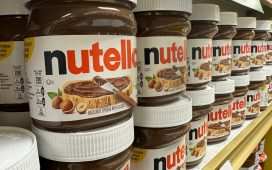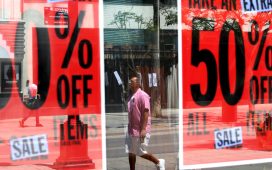Before a shopping centre selling past-season designer fashion at discounted prices opened its doors in April 1995, the site of Bicester Village had been “a wet field containing two old horses that looked ready for the knacker’s yard, and a fallen-down shed behind a small branch of Tesco”, remembers Colin Woodhead, a PR director who worked on the launch. “We might as well have been a Martian spaceship that had landed on that field.”
The timing of a retail concept then unknown in Britain was not auspicious. Three months later, the launch of an online bookseller called Amazon fired the starting pistol for a race toward internet shopping that would leave high streets half-empty and shopping centres boarded up.
But Bicester Village has defied the downward trend of bricks-and-mortar retail to celebrate its 30th anniversary at almost 100% occupancy, and with a waiting list for pop-up spaces.
Last year, it had a record 6.7 million visitors. It generates among the highest sales per square foot of any shopping centre in the world, and boasts the world’s only cut-price Dior store and biggest Pret a Manger. The Oxfordshire mall is the flagship of a global empire that includes two outposts in China, Bicester Village Shanghai and Bicester Village Suzhou.
The average visitor spends six hours on site. “What Bicester proves is that it pays to offer something you can’t get on Amazon. It’s a whole day out,” says Sarah Montano, a professor of retail marketing at the University of Birmingham.
While town centres struggle with environmental issues ranging from the cost of car ownership to refuse collection, the white picket fences and wide cobblestone avenues of Bicester Village – modelled on Disneyland – offer an environment akin to that of an all-inclusive holiday resort. Visitors are referred to as guests, rather than shoppers.
“It is about the value of our time,” says Dr Antonia Ward at the trends intelligence firm Stylus. “Not just about how to save time, but about how to spend time in a way that feels meaningful. That can give an edge to a social, bricks and mortar shopping experience.”
As Montano points out, “everyone loves a bargain”.
With a cost of living crisis starting to bite for consumers, outlet shopping is an attractive alternative, says Rachel Gwyther, a senior strategist at WGSN. “A challenging macro environment is changing the meaning of value to consumers, with shoppers increasingly inclined to spend more to save in the long term.”
At Bicester Village, Polo Ralph Lauren Alston penny loafers, £219 at full price, cost £153.
Montana says: “Food is really important to people now, and Bicester have invested thoughtfully in the sort of food outlets people really want to go to.”
She points to the appeal of Humble Crumble, makers of a TikTok-famous apple crumble (£7), whose only outlet outside London is in Bicester Village. Other food retailers include Itsu and La Tua Pasta, which offers a black truffle and ricotta tortelloni.
Ward says: “It’s not just about food – people these days want screen time. They want a coffee and to scroll through their phone.”
The rise of the secondhand and vintage market is boosting the status of outlet shopping. Off-price retail selling previous collections at a markdown were once fashion’s grubby secret, consigned to unsignposted out-of-town warehouses.
But as the trend cycle has lost its stranglehold on the consumer psyche, and the rise of preloved and vintage has elevated the cachet of clothes that are not hot off the catwalk, the status of outlet shopping has risen.
Ward says: “Preloved has got us excited about clothes being new-to-us rather than being new-new. And the interest in vintage has elevated the status of past-season clothes – there is real cachet in having a vintage piece, especially if you know when something came out.”
Bicester Village is the second most popular British destination for Chinese tourists after Buckingham Palace. About half of visitors from China visited Bicester last year, and station announcements in Mandarin and Arabic speak to the global nature of the clientele.
Last year, the investment fund L Catterton, which counts the luxury brands group LVMH as a shareholder, bought a 42% stake in Value Retail, which operates Bicester Village, in a £1.5bn deal. John Durnin, Bicester’s business director, describes his goal as “reshaping the traditional shopping experience”.
But Bicester’s success is not necessarily transferable to value retailers, says Montano. “It’s not going to work for Primark. But for a mid or premium customer, it is a very aesthetic, pleasant environment. It’s a kind of hyperreality – a nostalgic vision of a perfect high street. They have nice toilets and it is flat, so it is entirely accessible.”
Ward highlights initiatives among US retailers including Walmart and J Crew attempting to harness a social aspect to online shopping. “That experience of trying on a new outfit and showing it to your friends still happens – it just happens on social media rather than in a changing room.
“Malls got a bad rap, because they became a place where groups of teenagers hung out. But people miss shopping together.”









